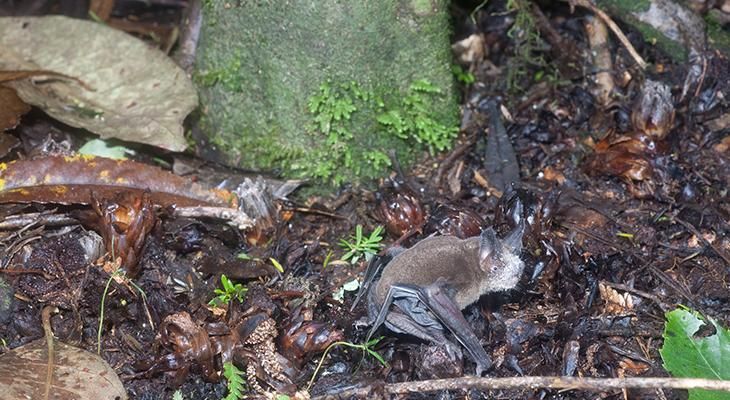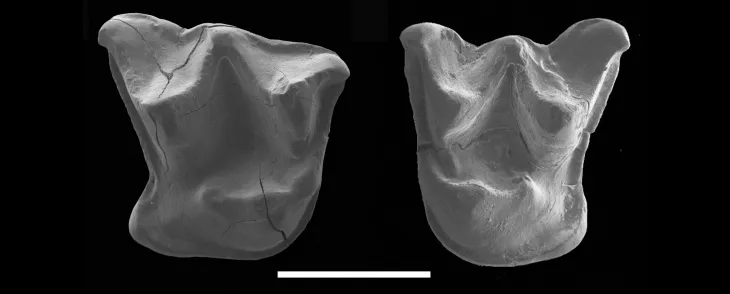16 Million Years Ago This Giant Bat Walked the Jungles of New Zealand
A new fossil gives clues to just how long ago bats arrived on the islands
/https://tf-cmsv2-smithsonianmag-media.s3.amazonaws.com/filer/a9/2b/a92b8b78-a80d-4247-a89b-88ee56ae6fed/mystacinatuberculata_edit.jpg)
New Zealand has always been home to exotic residents—kiwi birds, rare whales, hobbits and, many millions of years ago, giant walking bats. On the rolling plains of Central Otago on New Zealand’s South Island, a team of paleontologists stumbled upon the remains an ancient bat (Mystacina miocenalis), and analysis of the bat fossil published June 17 in PLOS ONE suggests it roamed the area at least 16 million years ago.
Bats are the only terrestrial mammals native to New Zealand, but it’s unclear how and when they got there. (Possums, though extremely common, arrived by boat in 1837.) Two modern species come from the same genus as the giant fossil, and are likely contemporary relatives of the ancient species. Previously, the oldest bat specimen found in New Zealand was about 17,500 years old.
A few things set this particular bat apart, a Laura Geggel notes for Live Science. First, it’s size: The researchers estimate that M. miocenalis weighed in at 1.4 ounces or .08 pounds. That might seem extremely light, and it is compared to some animals, but by bat standards it's quite large. For context: that’s roughly three times the size of most modern bats. In fact, it's so large that the bat probably didn't fly all that much. Suzanne Hand, one of the co-authors on the study and a paleontologist at the University of New South Wales in Australia, explained in a statement:
The size of bats is physically constrained by the demands of flight and echolocation, as you need to be small, quick and accurate to chase insects in the dark. The unusually large size of this bat suggests it was doing less in-flight hunting and was taking heavier prey from the ground, and larger fruit than even its living cousin.
Sure enough, based on the shape of its limb bones, this bat spent at least some of its time walking on the ground, rather than flying. The bat’s two modern relatives also spend part of their lives on the forest floor, burrowing for insects.

So what did this bat see when walking along the forest floor16 to 19 million years ago? At the time, a lake called Manuherikia spread across this part of Otago, surrounded by subtropical rainforest. Fossils near the bat provide a snapshot of what the rainforest might have looked like: lots of insects and diverse plants, as well as a few birds and crocodiles. M. miocenalis’s teeth suggest it took advantage of the food sources around it, eating nectar, pollen, fruit, insects and even a few spiders. Like one of its modern relatives, this bat probably played an important role in pollinating local plants.

Some of the same tree species that Mystacina bats use to roost today were also around back then and are present in the fossil record. In fact, the rainforest these bats lived in probably didn’t look two different from New Zealand's temperate old growth forests of today.
/https://tf-cmsv2-smithsonianmag-media.s3.amazonaws.com/accounts/headshot/Screen_Shot_2014-01-27_at_12.05.16_PM.png)
/https://tf-cmsv2-smithsonianmag-media.s3.amazonaws.com/accounts/headshot/Screen_Shot_2014-01-27_at_12.05.16_PM.png)